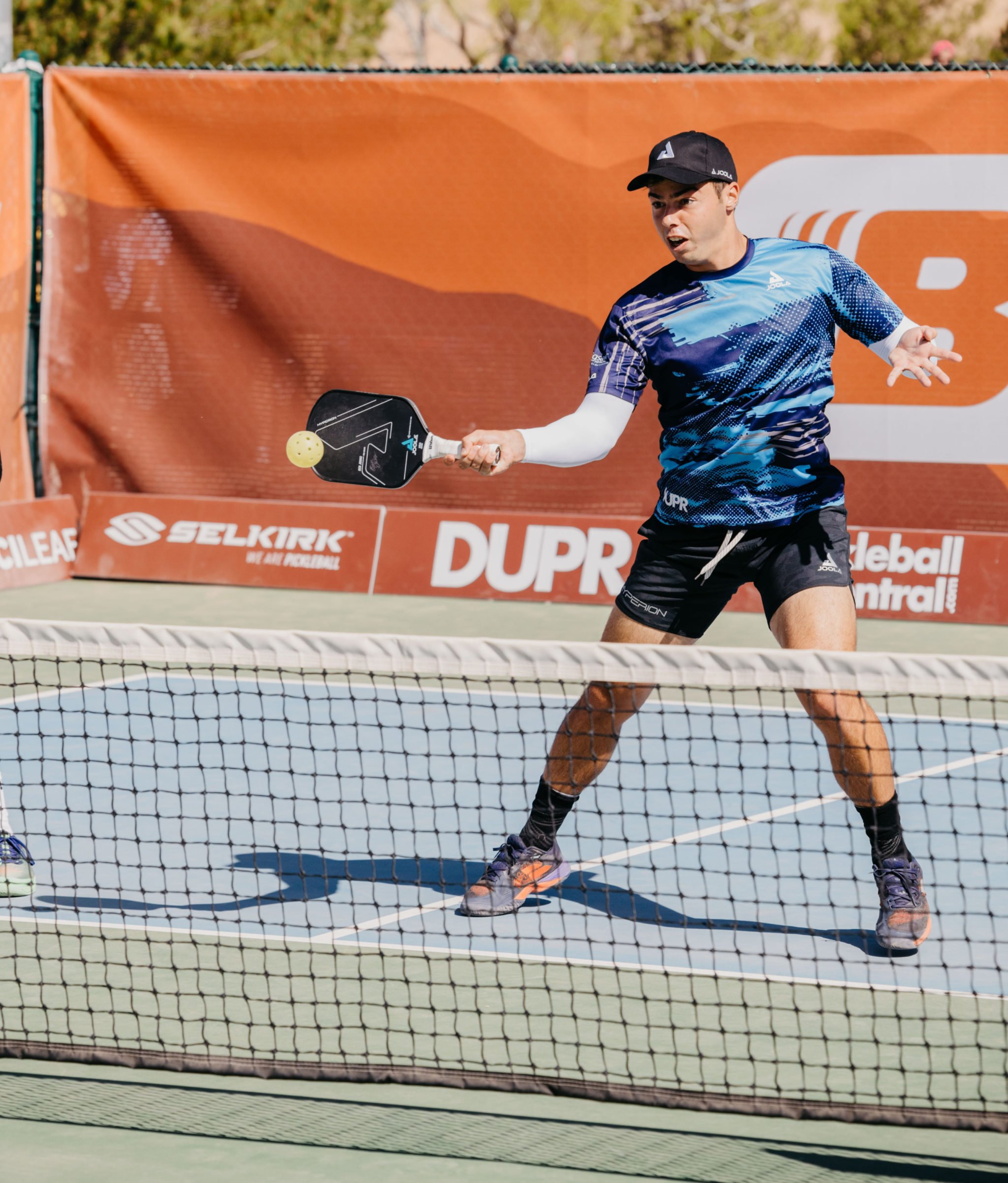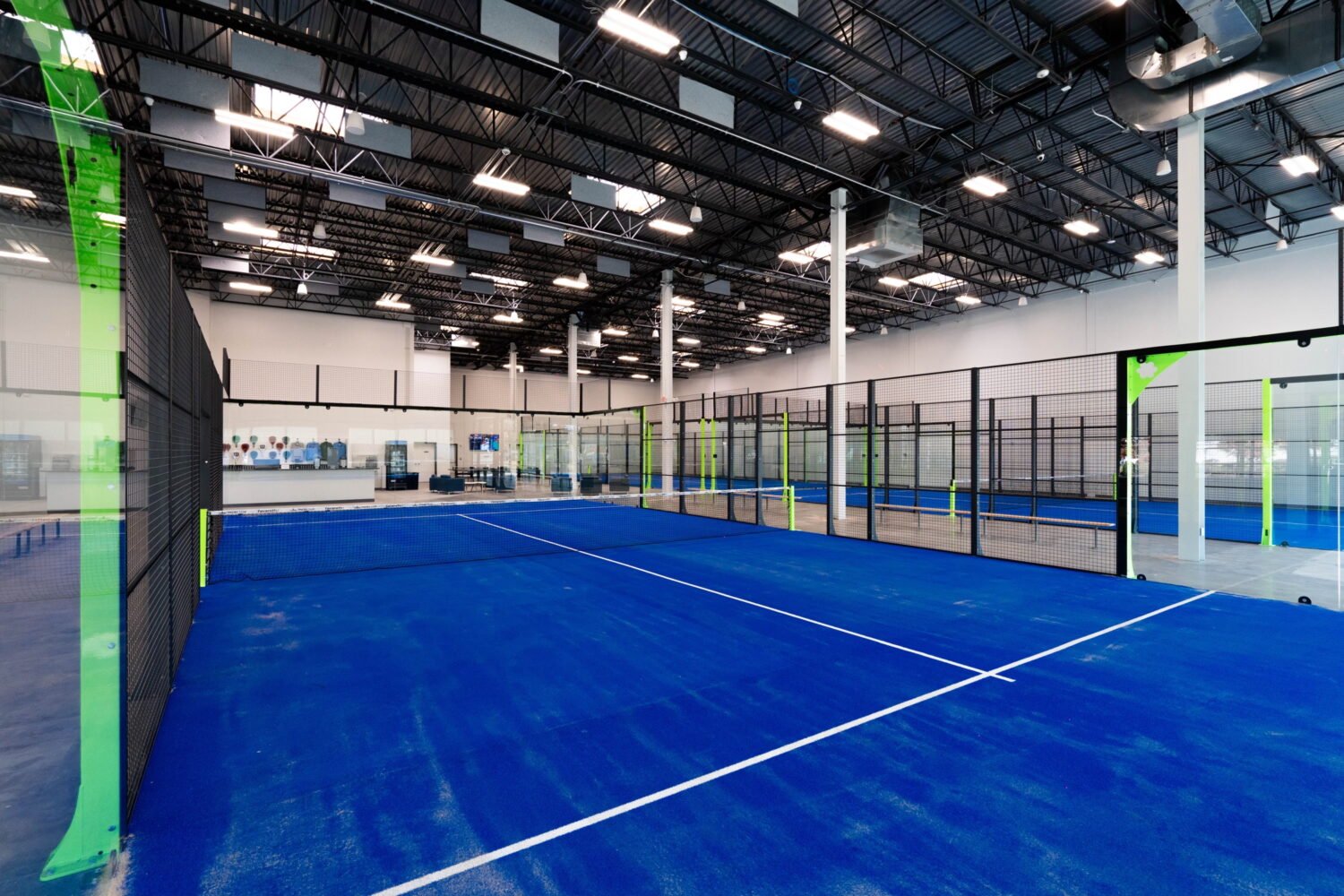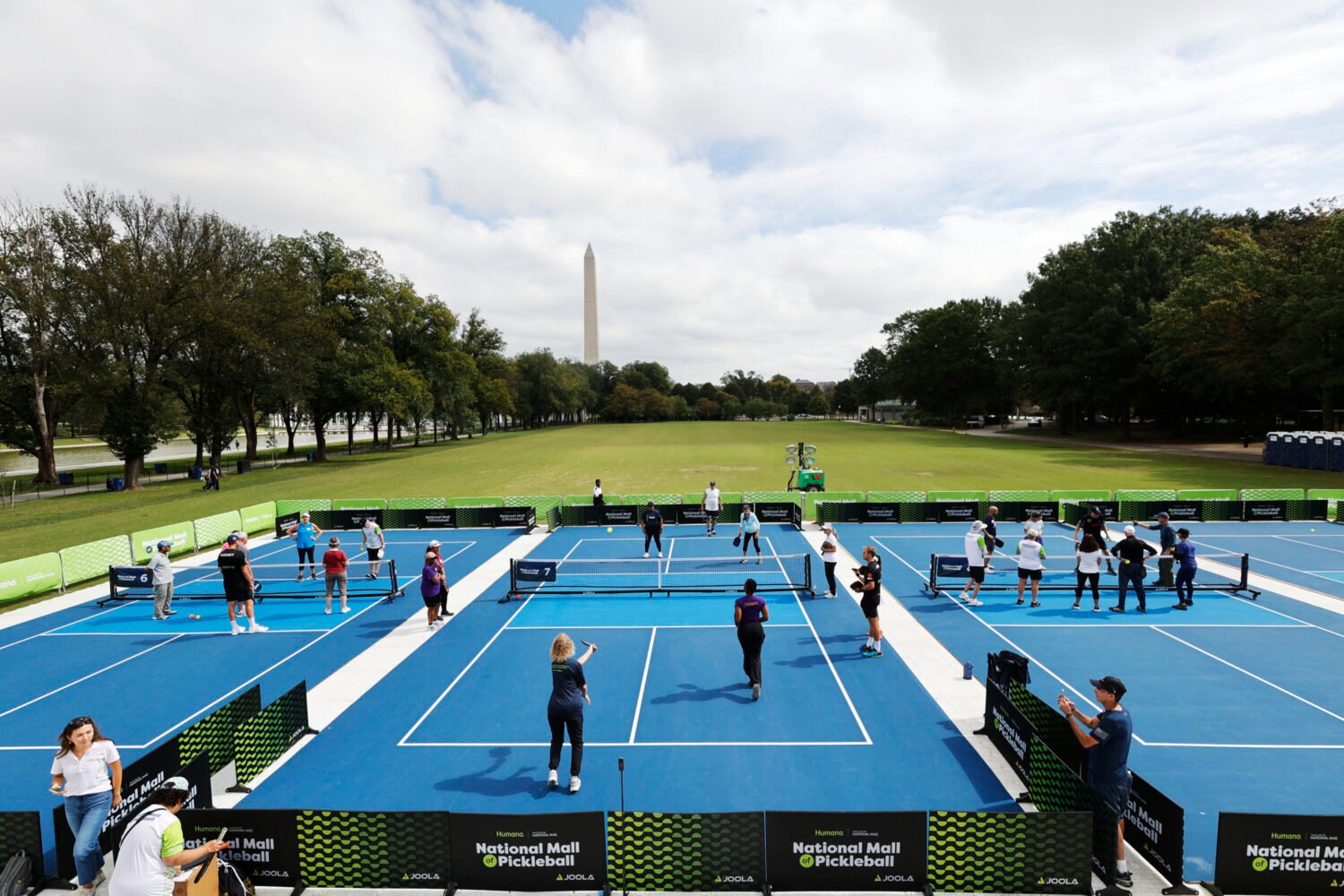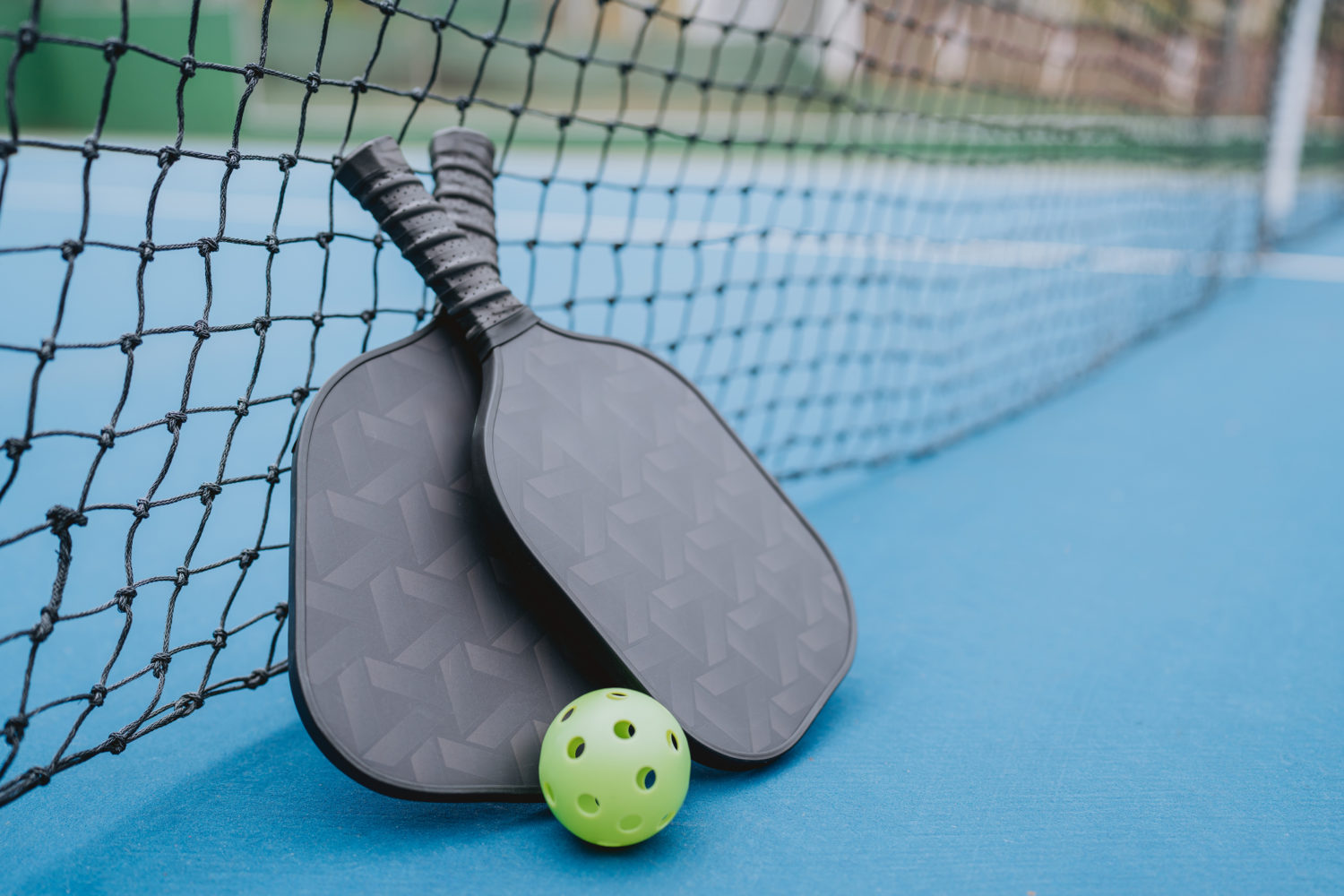When I arrive at Mattie J.T. Stepanek Park in Rockville for a lesson with the world’s number-one men’s pickleball player, Ben Johns, it feels like the opportunity of a lifetime, like getting a tennis lesson from Novak Djokovic. I’m a former college tennis player, and I’d taken up pickleball a few months earlier. The 23-year-old Johns grew up primarily in Gaithersburg. Although he moved to Austin in January, he’s home for a visit with family.
It’s 2:30 on a warm Thursday in May. While the park’s tennis courts are empty, the four pickleball courts are all taken and players are waiting.
I pull out my pickleball paddle. But instead of using the one I bought at a big-box store, I trade it in for the kind Johns is using. How could I not? Johns—who graduated this year from the University of Maryland with a degree in material science and engineering—helped design it after signing a deal with Joola, the Rockville company that made its name manufacturing table-tennis equipment.
We start off in the “kitchen,” the section of the court near the net. “This is called dinking,” Johns says as we begin hitting. “I don’t know how well you know your pickleball vocabulary?”
I don’t really know it at all. I’m still stuck on the three-number scoring system. The game goes to 11 points. When calling out the score, players say not only the points—for example, “5 to 3”—but also either a “1” or a “2,” a complicated system that denotes which serve a team is on and how many are potentially left. One easy thing to remember: You earn points only when you’re serving.
“If you step into the kitchen, you need to let the ball bounce,” Johns instructs. I hit the ball into the air and check my feet. I’m over the line and inside the kitchen. If we were playing a real game, I’d have automatically lost the point.
We get a rhythm going—I’m keeping the ball in play. “Good control here, very nice,” Johns says. I smile and immediately mishit the yellow wiffle ball.
I’m doing my tennis thing, hearing every coach I’ve ever had telling me to keep my feet moving. But I notice that Ben’s legs are rooted—his feet point straight at me. He appears to be expending no energy, and I don’t think it’s necessarily because I’m a fiftysomething novice and he’s a grand champion.
“Right now you’re moving a lot—like, a lot of footwork,” he says, reading my mind. In addition to competing at the highest levels, Johns teaches through his travel company, Pickleball Getaways, and makes instructional videos through a second company, Pickleball 360. “It’s a small court, and sometimes you can overdo it, especially tennis players at the kitchen line. They start doing all this,” Johns says, mimicking the hyperactive movements of a tennis player. “You can generally just reach,” he says, holding out his paddle for a ball I’ve hit wide. “In tennis, you have so much time. But pickleball is quick. Less movement is better.”
“How long did that take you to figure out?” I ask, trying to quiet my footwork.
“A little while,” he says with a big laugh. He picked up the game in 2016, and by 2018 Johns, a former USTA tennis player, was the men’s national pickleball champ.
“Always have an anchor,” he says. “It’s one step back, one step in. We’re not doing that multiple-backpedaling step,” he says.
I anchor my feet, and Johns smacks the ball at me. “There’s a little bit of dodgeball in pickleball,” he says. I shield myself with the paddle and volley it back. I’m surprised at my own quickness.
I tell him how happy I am to be on a court after being hit by a car two years ago while walking one of my dogs. Pickleball, I tell him, is my path back to tennis.
“It’s a good sport for injured people,” he says. “A lot of the tennis players I know that got injured rehabilitated with pickleball and then never returned to tennis.”
When our 30-minute lesson is over, I realize I don’t need to find my way back to my tennis-playing days. I’m a pickleballer now.



















